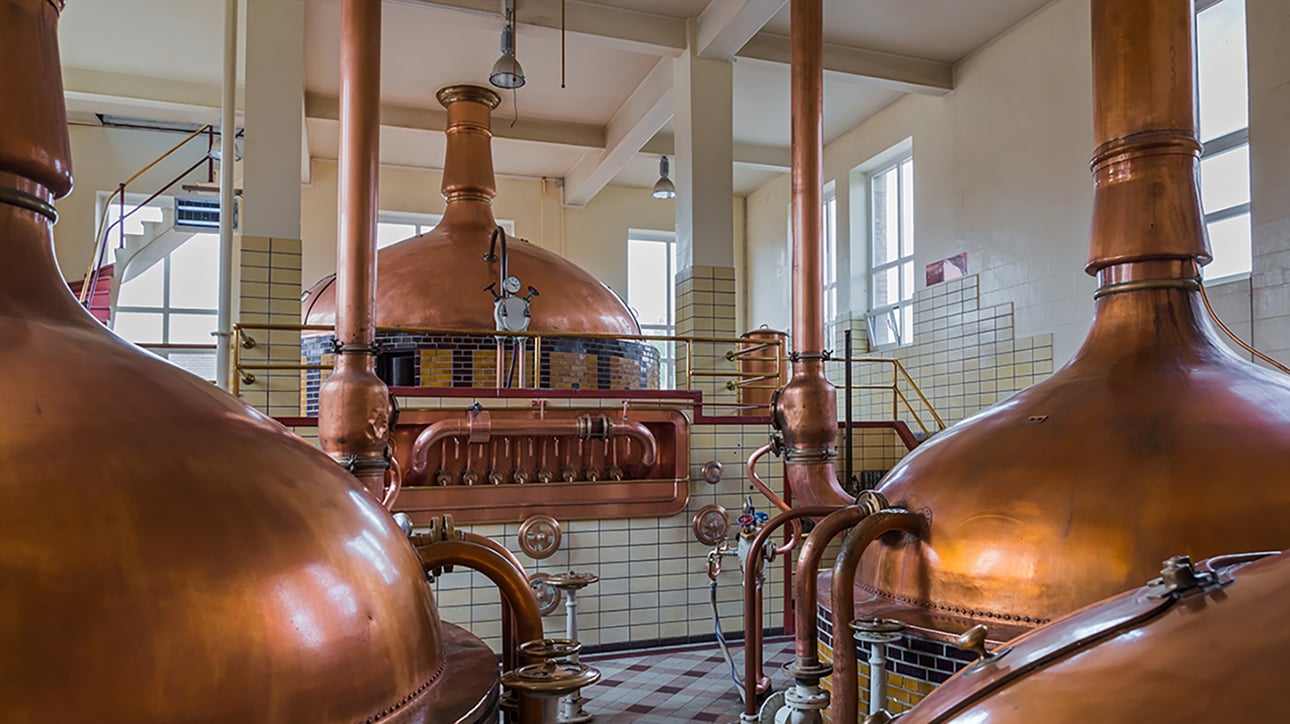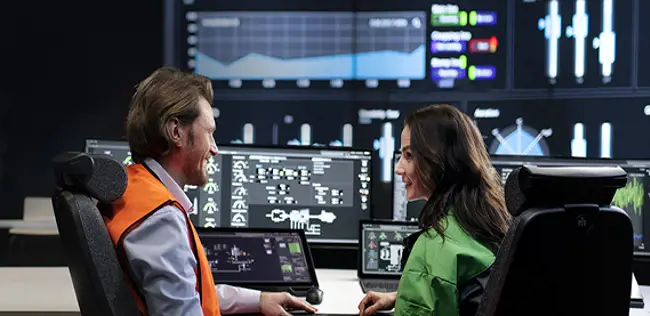Valmet Providing Flexibility in Batch Control
Mar 26, 2024
When the International Society of Automation first published its ANSI/ISA88 standards in 1995, the goal was to provide processors with standards and recommended practices as appropriate for the design and specification of batch control systems. This spurred the development and release of S88-based software solutions designed to simplify the process of implementing and modifying recipe procedures without complex software programming.

The goal of the software was to allow recipe creators or operators to modify recipe parameters, procedures, production schedules, batch start rules, equipment utilization, or to scale batch amounts more easily and at any time. The S88 standard also served to effectively separate the role of the control engineer (for programming) and recipe developers at the plant. At a chemical processing facility, that might be a chemist; at a brewery, it is the master brewer, for example.
“For years, if you were responsible for creating recipes in a plant, you had to also know how to program the control system. So, if it was your job to build recipes, that [task] always involved programming until the S88 standard came along,” explains Bob Ard, Senior Advisor at Valmet. Valmet is a leading global developer and supplier of process technologies, automation, and services for many process industries.
Ard says now, with flexible batch control software, any programming is completed ahead of time and only for the lowest level of control tasks, such as opening and closing valves, increasing temperature, pH control, adding materials, etc. These fundamental building blocks are called Phases in S88.
A recipe developer can then group the Phases using a drag-and-drop interface to create an Operation. The order of Operations for a processing unit is defined in the Unit Recipe. All the Unit Recipes required to make the batch from start to finish are grouped in the Master Recipe.
The result of this S88-style approach is a safer, more intuitive process that reduces the amount of programming, simplifies the implementation and modification of new recipes, and ensures batch cycles are more consistently executed with the proper timing and procedure.
Automating batch processes
According to Ard, the two primary automation methods used by Valmet are state-based control and S88 control using Phase logic and FlexBatch®, the company’s proprietary software.
State-based control generally works best for continuous processes, while FlexBatch is preferred for batch processes. However, some continuous processes operate like a batch process. By the same token, all batch plants contain some processes that are continuous or run sequences that do not require recipe control.
Setting that aside, Bob Ard says the general rule of thumb is to use flexible batch control for recipe-driven Units and state-based control for all others.
“State-based control is ideal for running the infrastructure in the plant, such as the boilers, air compressors, and glycol chillers,” says Ard. “I need those regardless of the product that I’m going to make and so I would automate those units using state-based control. But I would use FlexBatch control for the units that process the material to make the batch.”
Batch processing challenges
With batch processing, one of the challenges is the communication and coordination between units – a task that state-based control can only resolve with significant programming.
Many batch processes consist of a “train” of Units where the batch material is introduced in the first Unit and passed from Unit to Unit. Each Unit is designed to process the material in some way, for example, heating, cooling, adding other materials, blending, separating, etc.
“With a batch process, you are constantly trying to coordinate activity between units, and that requires a lot of programming to do if you’re going to do it in state-based control,” explains Ard.
In his book, tentatively titled “How to D3,” Ard gives an example of batch processing by a brewery. The comprehensive guide to control system design is expected to be published in Q4 of 2023.
In a brewery, grain, water, hops, and possibly several other ingredients are processed by a series of Units. In this example, the Units would be a weigh scale, a mash tun, a lauter tun, a brew kettle, a whirlpool, and a fermenter.
The batch process would begin by milling and weighing the grain at a weigh scale. The program in the weigh scale follows a predefined series of steps to mill and weigh the recipe amounts of grains into the scale hopper.
The next Unit is the mash tun, where the starches from the grains are converted into sugars. When the mash tun is loaded, a recipe amount of water is metered into the mash tun at a recipe temperature. The mash tun produces a mash of sweet water with just the right sugar profile for the style of beer to be made.
The mash is then transferred to a lauter tun, which separates the grain from the mash while keeping the extract that is suspended in the water. The result is called wort, which is then transferred to the kettle.
The brew kettle boils the wort to evaporate enough water to reach the specific gravity identified by the recipe. Various hops are added to the kettle during the boil state. Some are added early in the boil state, while others are added near the end. Some beers might require the addition of fruit, honey, dextrose, spices, and other flavorings or sugars. The brew kettle then coordinates the transfer of wort to the whirlpool.
The whirlpool allows the coagulated proteins suspended in the wort to settle to the bottom of the tank. This material is called trub and you do not want it in your beer. The wort is carefully decanted from the side of the tank and pumped through a cooler on its way to a fermenter. Yeast is pitched into the wort stream as it exits the cooler. The yeast work their magic in the fermenter to change wort into beer.
So, what are the benefits of using flexible batch control for this and other processes?
State-based control – pros and cons
The Valmet D3 DCS system is perfectly capable of state-based batch control of a process like brewing beer with – or without – FlexBatch. However, with state-based control, the procedures are hard-coded into a series of “States” within a program. The program sequences through the states to process material within the Unit. State-based control utilizes Recipe Data Files to provide the recipe formula values.
Each Recipe Data File is loaded into the first Unit in the sequence and passed down the line. Each upstream Unit monitors its downstream Unit to know when to transfer the recipe. The upstream Unit allocates the downstream Unit to the Batch, and each Unit deallocates itself from the Batch when its part of the process is completed.
Although state-based control techniques work well, the programming required to achieve the necessary coordination level can be extensive. If the products being made require different procedures, it can be even more labor intensive.
Flexible batch control – pros and cons
With FlexBatch, the first question is whether the software provides benefits beyond the baseline DCS system.
The FlexBatch software integrates recipe management and the manufacturing process so that product developers, engineers, and production staff can quickly develop, produce, schedule, and manage documented, executable recipes using intuitive graphical tools. The software is designed in accordance with the ISA-88 standard for batch control and reduces the dependence on control engineers.
The FlexBatch procedure editor gives recipe developers the ability to draw up procedure charts using a drag-and-drop interface to combine Phases into Operations, Operations into Unit Recipes, and Unit Recipes into a Master Recipe.
“The recipe developer can mix-and-match Phases using a procedure editor and draw procedure charts to establish the sequence of Phases and Operations in serial or in parallel, as needed,” explains Ard. “You don’t need to be able to program a DCS to draw or redraw the procedure chart,” says Ard.
New recipes and even modifications require no programming. Operators can force transitions (with sufficient privileges), schedule batches and equipment allocations, and watch live recipe procedure charts for greater awareness of batch execution.
“The live view of the FlexBatch procedure chart shows exactly what is happening with the process. Operators can clearly see which part of the recipe procedure has been completed, which part is currently executing, and what comes next. Providing that kind of visibility with state-based control requires a lot of graphics and additional programming,” says Ard.
Although there is a cost for the FlexBatch licenses and server, it is offset by reduced DCS implementation time. Even the fundamental building block that still requires programming, the FlexBatch Phases, is easier to design, create, and maintain compared to state-based programming.
“Decades of experience demonstrate that a FlexBatch implementation requires up to 30% less programming,” says Ard.
Increasing demand for S88 flexible batch software
Today, Ard says most processors expect an S88 flexible batch control software solution or will go elsewhere if one is unavailable.
The increasing demand was even cited as a key factor in the decision by Valmet to acquire NovaTech Automation’s Process Division – the original developer of FlexBatch – in January of 2023.
“What we were looking for was NovaTech’s batch control capabilities, and the FlexBatch software is an essential part of that,” says Kari Huovila, VP, North America Automation Systems at Valmet.
Valmet expects that adding the batch control capabilities of FlexBatch will only strengthen its own existing Valmet DNA system and help the company enter new industries with a highly competitive solution.
“At this point, there really are no disadvantages of using FlexBatch for batch control,” concludes Ard.

